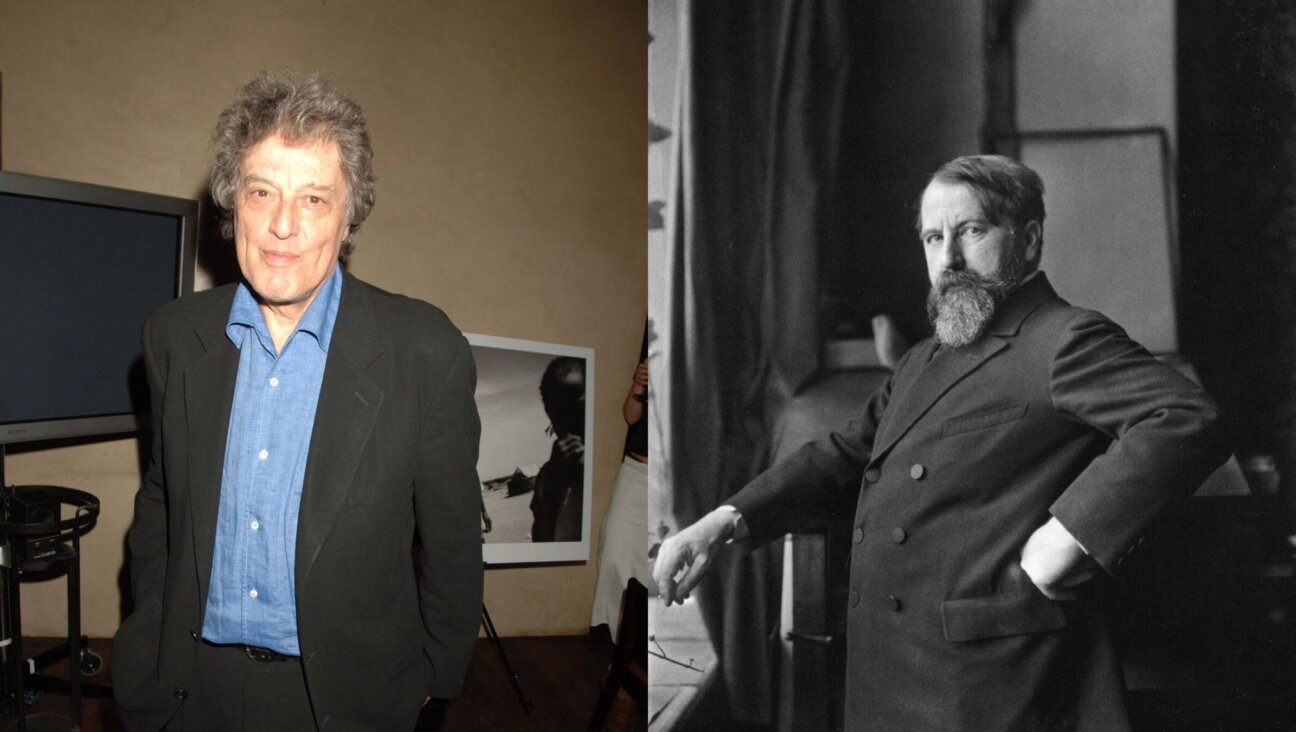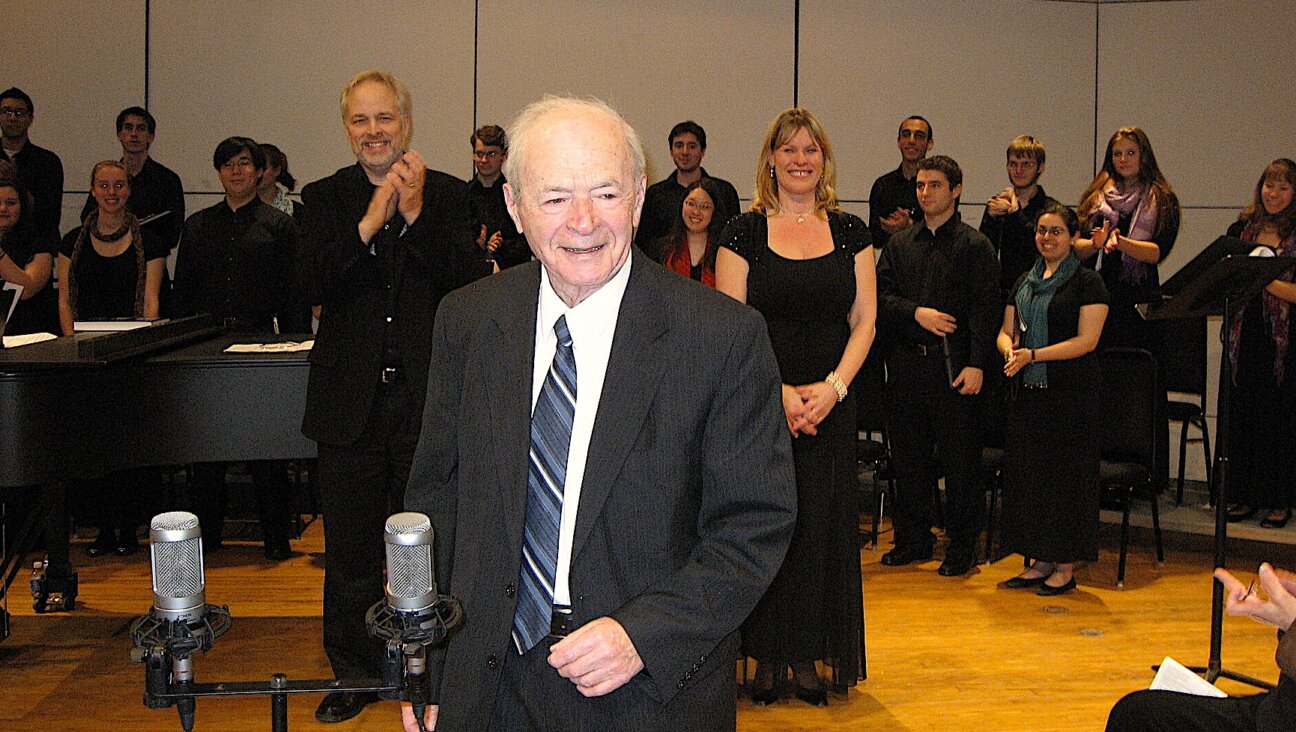A Civil Disagreement About Jews and War

Graphic by Angelie Zaslavsky
On his second to last day as executive director of the American Jewish Historical Society, Jonathan Karp is patrolling the galleries of the Center for Jewish History. “Passages through the Fire: Jews and the Civil War” is on exhibit here until August 11, at which point the majority of it will move to the Jewish Museum of Maryland. The exhibit is a collaboration between AJHS and the Yeshiva University Museum, but Karp was the driving force behind it. Soon he will be returning to SUNY Binghamton, where he is a professor of history; in the fall he will teach a course on the history of Jews and crime, from the Middle Ages to Bernard Madoff, and this may become the subject of a book. Another book is also in the works for Karp, this one about the relationship between blacks and Jews in the music industry. As Karp took one last stroll through these galleries, he talked with the Forward’s arts and culture editor, Adam Langer, about how the exhibit helped to undermine some of his own preconceptions about Jews in American history.

Talk of the Nation: Documentary filmmaker Ken Burns talks with Jonathan Karp at an event earlier this year at the Center for Jewish History. Image by Melanie Einzig
Adam Langer: Had a great deal of attention been paid to the roles of Jews during the Civil War before this exhibit?
Jonathan Karp: There was an exhibition on this in 1961 by Bertram Korn, who was the leading historian on Jews and the Civil War. There has been a lot of scholarship on Southern Jews and the relationship between blacks and Jews, but on the Civil War per se, relatively little. Despite this neglect, the Civil War is kind of a crucible of American Jewish history. The Jewish population in 1840 was about 15,000, and in 1860 it was about 150,000, and there were probably about 10 or 11,000 Jews who fought in the Civil War — maybe about 7,000 on the northern side, 3,000 on the southern side. The war rapidly accelerated Americanization on both sides, and more than 50 Jews were commanders of regiments. The story we’re telling here is about rapid Americanization. In some way it’s a Jewish story, but it’s an American story in that it illustrates how America provided a framework for Jews to exercise their talents relatively unhindered by their Jewish identities.
But did the Americanization hold? Did Jews’ assimilation into the Civil War effort remain relevant once the war was over?
It does seem that it did remain relevant. Contacts were made during the war; there was the absorption of American English, of American manners and mores. And the war also created the groundwork for the creation of a kind of business elite. Part of that had to do with Jews’ involvement in clothing manufacture. Because of the needs of both militaries to supply uniforms, an unusually high number of Jews were able to plug into that, creating the groundwork for the establishment of the German Jewish elite. In that sense, the Civil War was a crucial step to the establishment of a kind of Jewish economic beachhead that had enormous consequences for generations to come.
Was there any friction between Jews who had served and those who hadn’t?
The underlying question in a lot of investigations of Jews in the military is often a defensiveness about accusations of Jews shirking military service. That was a stereotype that went back to the 18th century. Were Jews physically capable of serving? Were they religiously capable of it? There were accusations that Jewish troops, on the first appearance of a false messiah, would march off to Palestine instead of completing the battle. Or they would stop fighting on the Sabbath. There were serious debates about whether Jews were too poor, weak and malnourished and unable to fight.
The exhibit also questions some of the assumptions we have — for example, about Jews being involved in slavery.
Yes. People are still surprised and upset to learn that in this regard, Jews were really no different from other whites, that Jews in the South owned slaves in almost exactly the same proportion as the general white population — about a quarter. And even in the North, there were relatively few Jews who were part of any kind of abolition movement. Abolitionism did have some anti-Semitic overtones and missionary overtones, and that may have dissuaded some Jews from joining. But on the whole I think what’s more likely is that Jews avoided thinking too much about the question or took it for granted that this was a natural feature of life here.
During the course of the war, how much of a factor was anti-Semitism?
There’s no doubt that there was an intensification of anti-Semitism — a lot of caricatures in newspapers, denunciations of Jews, that sort of thing. But what’s interesting is that the anti-Semitism was mostly of a rhetorical nature, and surprisingly it doesn’t seem to have hindered the prospects of individual Jews.
Is there an overall theme here? An overall story you’re telling, or a message you hope will be conveyed?
One recurrent motif here is how we find Jews against stereotypes — in unexpected places, doing unexpected things. There’s Solomon Nunes Carvalho, a Sephardic Jew from Charleston, [S.C.,] who was a pioneering inventor, photographer and painter. There’s Isachar Zacharie, who was Lincoln’s podiatrist. And he was close to Lincoln, at least according to his own accounts. In fact, Lincoln sent him on a secret peace mission in 1863 to the South to see if he could negotiate an early end to the war, and the reason that Lincoln thought that Zacharie might have some success was that he was a Jew and might be able to talk with his co-religionist Judah P. Benjamin in the Jefferson Davis Cabinet. And as far as Jews being found in surprising places, everything I’ve said is multiplied and magnified manifold by the case of Benjamin, who was arguably the most successful Jewish politician of the 19th century.
When you were putting together the exhibit, was there anything that surprised you?
Absolutely. When you’re doing an exhibition or writing a book about these topics, you’re always asking yourself, “What’s the Jewish story here?” And I think what we found was that there are Jewish stories here, stories that are distinctive to Jews, but Jews often don’t stand out. That’s important because they always had stood out. They had been segregated and separated in many important ways. But Jews were enabled to serve as commanders over non-Jews, over Christians. That’s actually shocking to me that that happened, and in such large numbers. I don’t think in a grand episode Jews had ever previously had the opportunity to play their lives out as individuals to the degree they did here.
When you look at the famous histories of the Civil War — the documentaries by Ken Burns, the books by Eric Foner and James McPherson — how many of the stories here have actually been told before?
This material has not really made it into the mainstream histories. James McPherson doesn’t even mention, or mentions only in passing, the episode where General Grant expelled the Jews. We had Ken Burns here to do a program, and I pressed him on this question — that he doesn’t talk about ethnicity very much, about Irish or Italians or Jews. And his response was that this is not an ethnic story. I disagreed. I said that was an important element, that people came from different backgrounds and were forced into this conflict.
And what did Burns say?
He said if he does another documentary on the Civil War, maybe he’ll reconsider it.

















